No matter what you research on the internet - you will get every opinion confirmed and at the same time find the opposite.
Unfortunately, we have the same thing with scientific studies - so you can no longer rely on them. The result usually depends on the funder.
Let's take the thread structures that we find in blood as an example.
Some of them are transparent or start to glow in different colors or are now slightly greenish or generally red or blue. Not much longer and we have the entire color spectrum.
Slightly greenish shimmering thread structure on the inside:
Let's take a look at the thread structures. They are extremely resistant and not to be confused with the hydrogels.
After a long search, I came to the conclusion that this is a combination of fungi and their ability to fluoresce or bioluminesce by means of luciferase, which contain various toxic substances, such as graphene oxide or others. Since I don't have a mass spectrometer or other laboratory parameters, only observations over a longer period of time under the microscope can help.
Even fungi do not always glow. They react to irradiation with long-wave UVB light, contain luciferase and glow in nature in a yellowish or greenish light. It also seems to be possible that a certain type of mushroom glows in Europe - but not in America. So it's not an easy area to get reliable information
Other types of fungi, on the other hand, glow in a typical blue when exposed to UVB radiation, as is also known from simple white fibers.
It is the same with the hydrogel structures in blood - some give a very strong reflection in blue - others not at all.
But is it only fungi? - Unfortunately not.
It could also be sea creatures, insects or something synthetically produced, as described in this article.
Zinaida M. Kaskova from the Russian Academy of Sciences in Moscow has decoded the structure of the responsible molecule in the Brazilian fungus Neonothopanus gardneri:
Many living organisms emit light, a phenomenon called bioluminescence (1, 2) In most cases, light emission results from the chemical oxidation of a luciferin substrate catalyzed by a luciferase enzyme. The luciferin reacts with molecular oxygen to give a high-energy intermediate (HEI), the decomposition of which releases enough energy to produce the emitter oxluciferin in the Singot electronically excited state. Fluorescence from this excited metabolite leads to visible light emission, which is used in nature for signaling and illumination 1 (1). The luciferin/luciferase systems and the corresponding oxylucififins of several bioluminescent insects, bacteria and marine animals are characterized 2(2). This knowledge has resulted in major technological advances, such as genetically encoded labels with fluorescent proteins (3, 44), pyrosequencing 5(5), ultrasensitive enzyme quenching with triggered chemiluminescent substrates 6(6), and imaging via bioluminescence resonance energy transfer (7, 8).
Luciferin - a small molecule that is reacted with oxygen by the enzyme luciferase, whereby the excited molecule oxyluciferin then emits light.
What is interesting about this article is the statement that, according to Kaskova and her research group, luciferase can also glow with other, similar chemicals - but then in colors other than the normal green.
The more you delve into this topic, the more confusing it becomes. The main question that arises here is:
What do we really see under the microscope? What is shining at what wavelength and why is it needed?
(A) Natural luciferin (1), synthetic analogs 3 and 5 to 9 and enzymatic chemiluminescence reaction in Tris buffer (pH 7). (B) Chemiluminescence spectra of luciferins 1, 3 and 6 to 9. The Savitzky-Golay filter (20 points) was used to improve the signal-to-noise ratio due to the very low light intensity. (C) Chemiluminescence quantum yields (ΦCL) and (D) the observed chemiluminescence decay constant for compounds 1, 3 and 6 to 9.
The possible colors and their different wavelengths are also likely to have a diverse function.
However, in nanorobotics there is also talk of light-powered shuttles. This means that light is used to propel the nano. And since swimming is easier for such units than walking, it would be logical to find luminous units directly in the blood. The light function could also be used as a means of communication, as some bacteria do, or as a coordination scheme for algorithms.
For example, robot coordination based on light lines...
Doesn't that look familiar? The many lines that now show up in the blood? With the different dots on them?
Are these possibly light lines for control, as in robotics?
Imagine if our eyes could perceive more than just visible light. Biological processes in the body can be measured over many wavelength ranges, but exclude the visible light spectrum. If this were not the case, we would constantly see in bright colors when our intestines begin to digest or when instructions are given to the muscles to move. It would be a complete mess.
The nanotechnology in our body must therefore switch to other wavelengths to control its units, otherwise short circuits and malfunctions would occur. To do this, it partially switches to the range of visible light.
A mini-robot that is made of the same material as our genetic material, can be controlled by light and can move within a cell? This is no longer a vision of the future. Chinese physicist Laura Na Liu has constructed it in nano format. And as early as 2016.
The central component of their miniature machine is no larger than one ten-thousandth of a human hair in diameter. It consists of coiled DNA bundles that are connected to each other by a kind of hinge - similar to two blades of scissors that can be opened and closed.
In nanoplasmonics, DNA bundles are provided with nanogold particles that are excited by UV light in order to open and close. When exposed to UV light, gold particles begin to vibrate and emit optical signals. And this happens in living cells... Another interface between biology, chemistry and materials science
Another reason why I am skeptical about nanogold. Why can't we continue to use colloidal gold? Why does it all have to be nano?
Worse still - the nanorobots get their own motor made of DNA and using ATP as propulsion.
This brings us to a complete synthetic replica of biology.
What do we still see in microscopy is really still natural?
With many thanks to Danyèle - who tirelessly puts new ideas together :-)))
And here are some more pictures of increasingly colorful hydrogel structures. (I'll just call them that now - as we can't be sure what they really are). All pictures of unvaccinated clients.
These discolorations are new for our area up here in Lapland - at least I hadn't been able to see such changes until a month ago. Especially the massive blue colorations that are starting to appear. Orange or rust-colored parts have been there before.
Striking geometric symmetry within these rectangles - with thread-like and continuing cable-like attachment:
I have set up a Telegram channel - where I post new images from darkfield microscopy. If you would like to browse through new pictures in between, you are welcome to register.
You are welcome to book a subscription for the Remote Viewings directly at:
For your help and support here on Substack you will also get access to my Future Targets, Extra Targets and the first blueprint for the LaserCube on my website.
Bitcoin QR-Code

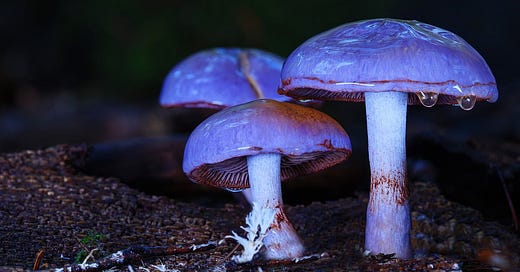



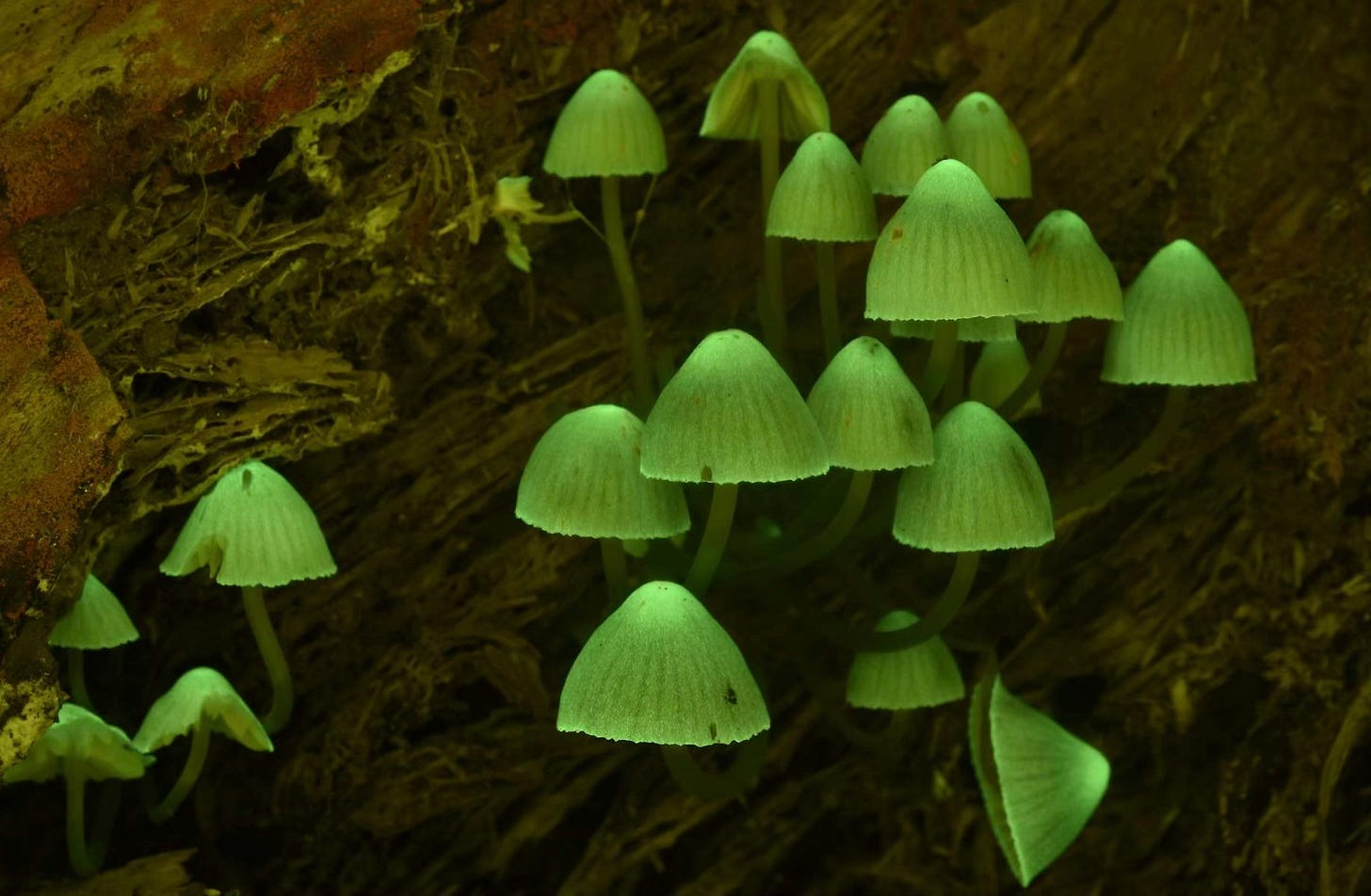

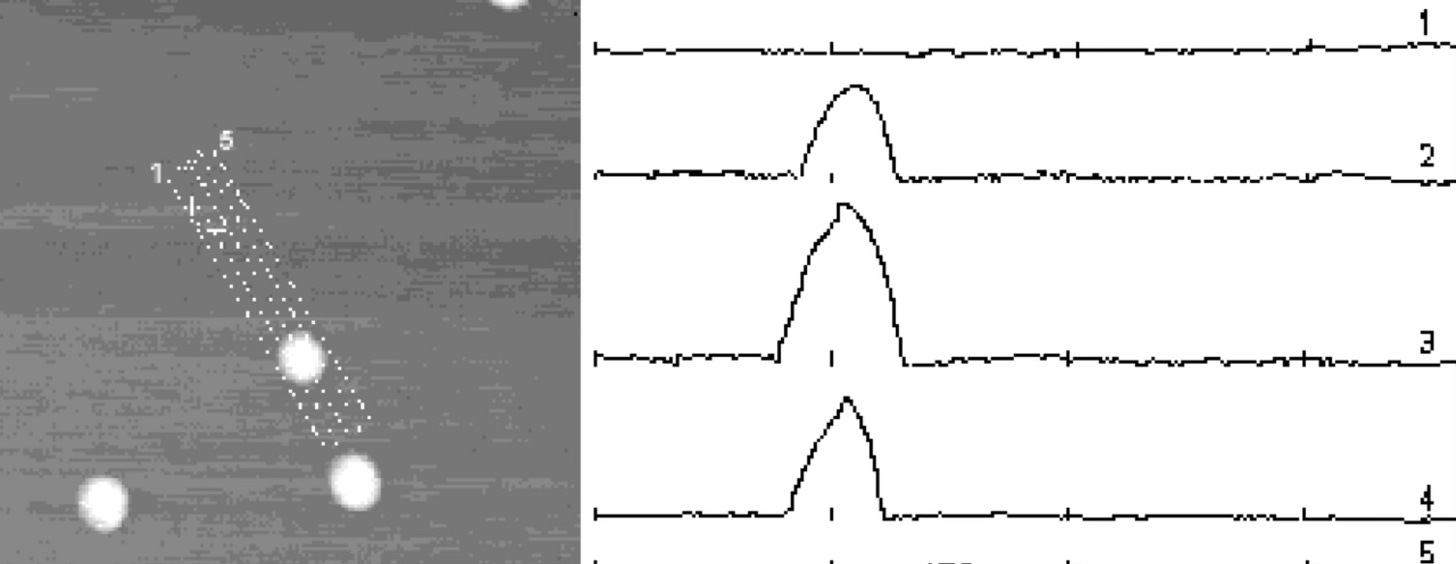


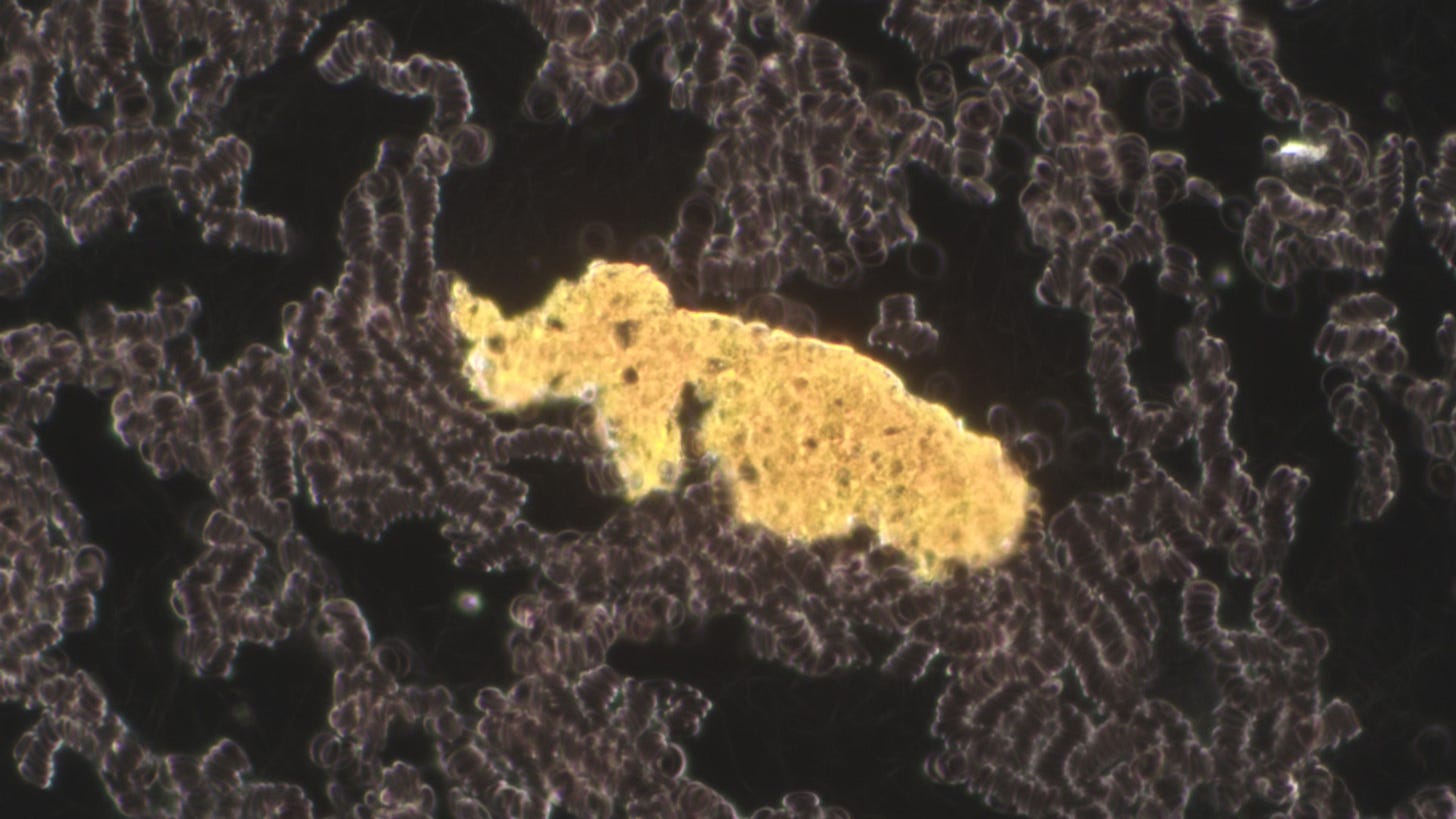
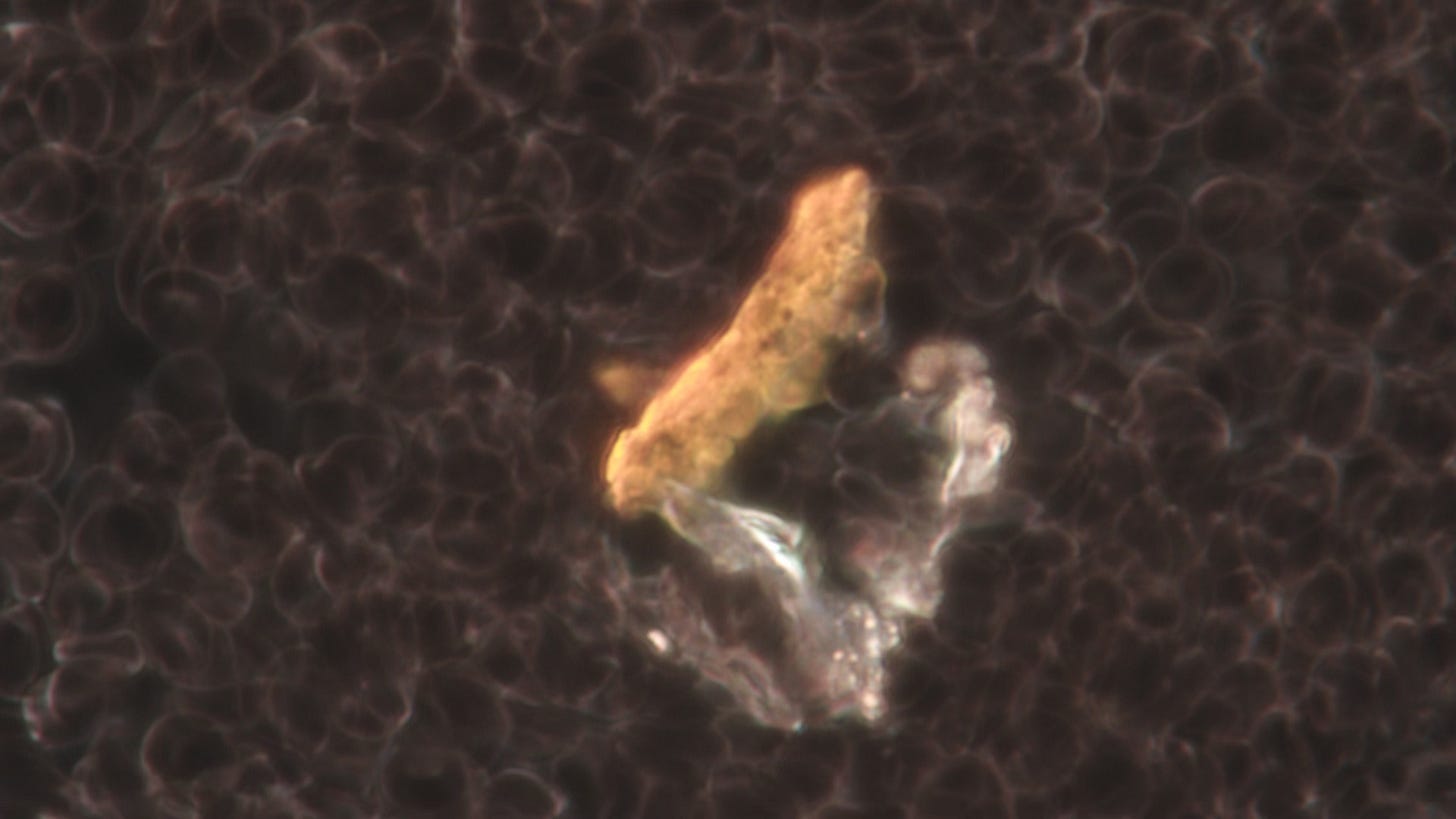

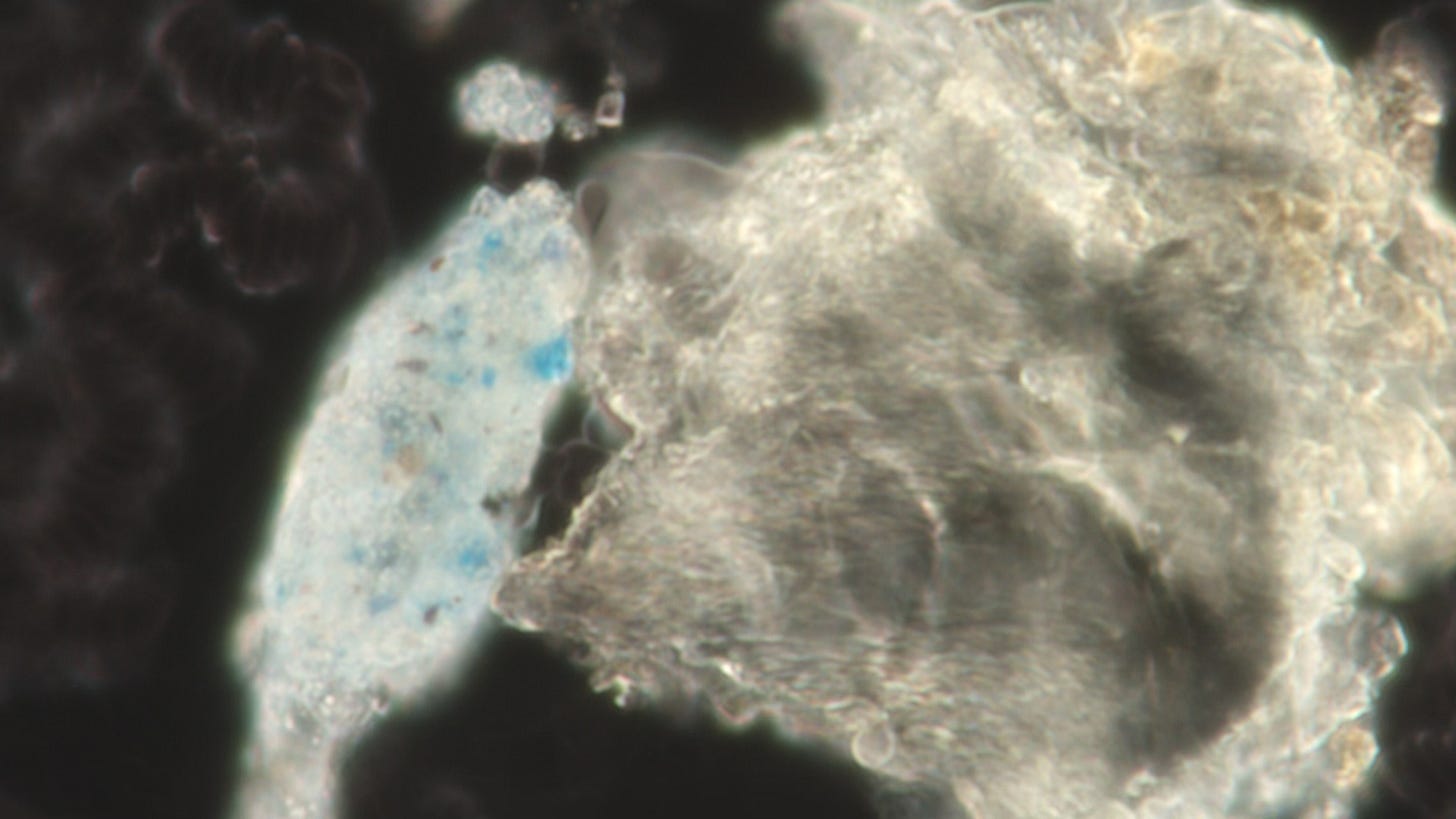


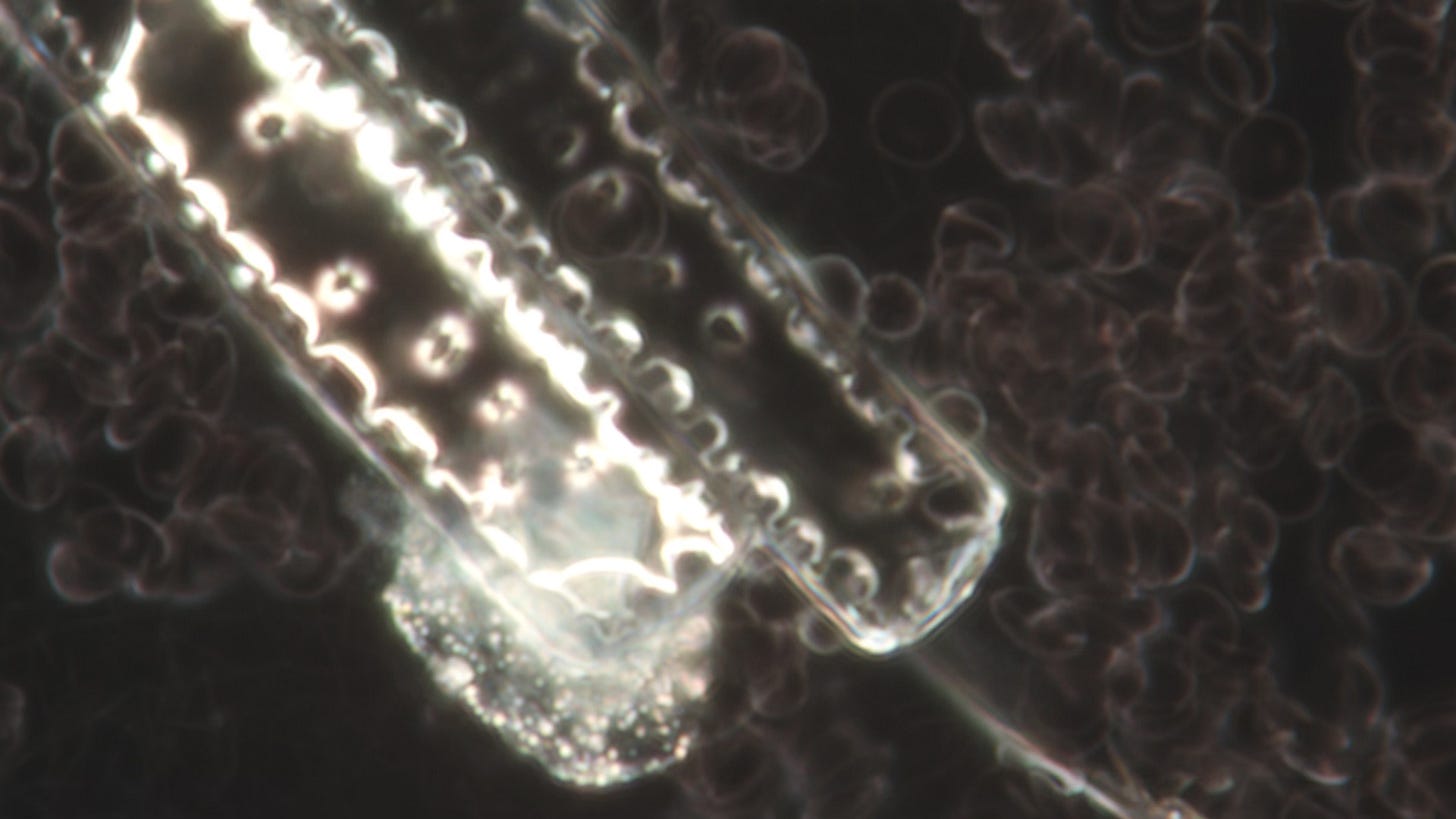

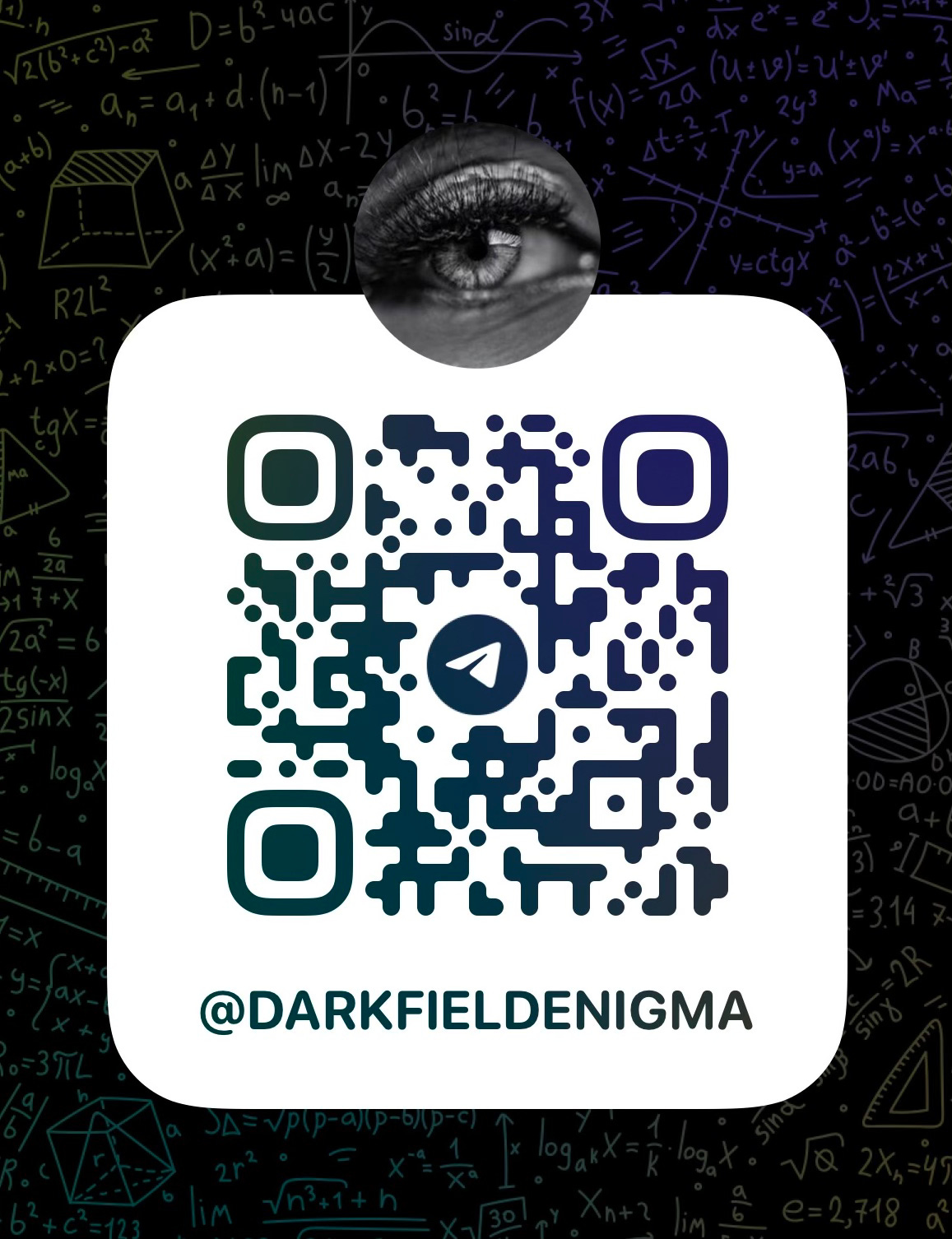


Hi SAM!
Thank YOU so much for your courage and dedication!
See, even the meagre contribution can help shedding some light on the body snatchers critters invading humans!
« Striking geometric symmetry within these rectangles - with thread-like and continuing cable-like attachment: »:
From your amazing pictures I can deduce that the unfolded fibres first hosts bubbles, which then transform into rectangles after their deployment.
Are these glowing light lines and dots would be the World Wide Web and communication blood highways? Would these be what the World Economic Forum keeps pushing as the Internet of the Bodies network? Consequently, light/frequency nanotech should be fought by the same means they thrive and drive on. Your Laser Box and Tony P. Triangles, and 5G immediate shutdown are the keys to their deactivation.
However, as you mentioned, the many sources can’t yet be controlled, our bodies and that of all living beings now are the battle grounds for all types of fibres and polymers -plastics. I will add that food and vitamins won’t change a iota to their proliferation for they, and most of the water, injectables or chemtrails air we breathe, all seem to be potential sources of these fibres intake. As per Dr. David Nixon: « Everything is contaminated. »
That said, cling to your healthy habits! Do not turn hypochondriacs by stopping eating, drinking, exercising or breathing! LOL!
As per our conversations, we have to consider that every quantum dot has it’s own glow. I’ve had the thought about a kind of microorganism that sheds a blue light at night: Phytoplantons, dinoflagellates, etc.
In this video, look carefully, at .25x speed, from 0:10. Algae are not only glowing in blue, but also in the orange colour range (watch the fingers): https://www.youtube.com/watch?v=eTDxjOjzm9w
These algae, as well as your mushrooms, also contain Luciferase.
Just for the beauty of it, watch swimming dolphins in a bioluminescent sea:
https://www.youtube.com/watch?v=bJcTWr8-mFo
Your work is always my best food for thoughts. Never give up!
Best.
Remark:
A milligram of firefly Luciferase costs around CAD 650$ for a 200 micro liter/per vial. If I get it right that is one millionth of a liter.
Next questions are:
Who has developed these new Luciferase colours and from which organism/plant?
Who has the money to stain blood invaders with different sources/colour Luciferase and disperse them all over the planet?
Why are the glowing lines the usual Luciferase colour compared to the other glowing objects?
Why do they need these Luciferase colour differentiation/identification for?
Your subscribers should also arise many interesting questions about this post of yours.
Regards.